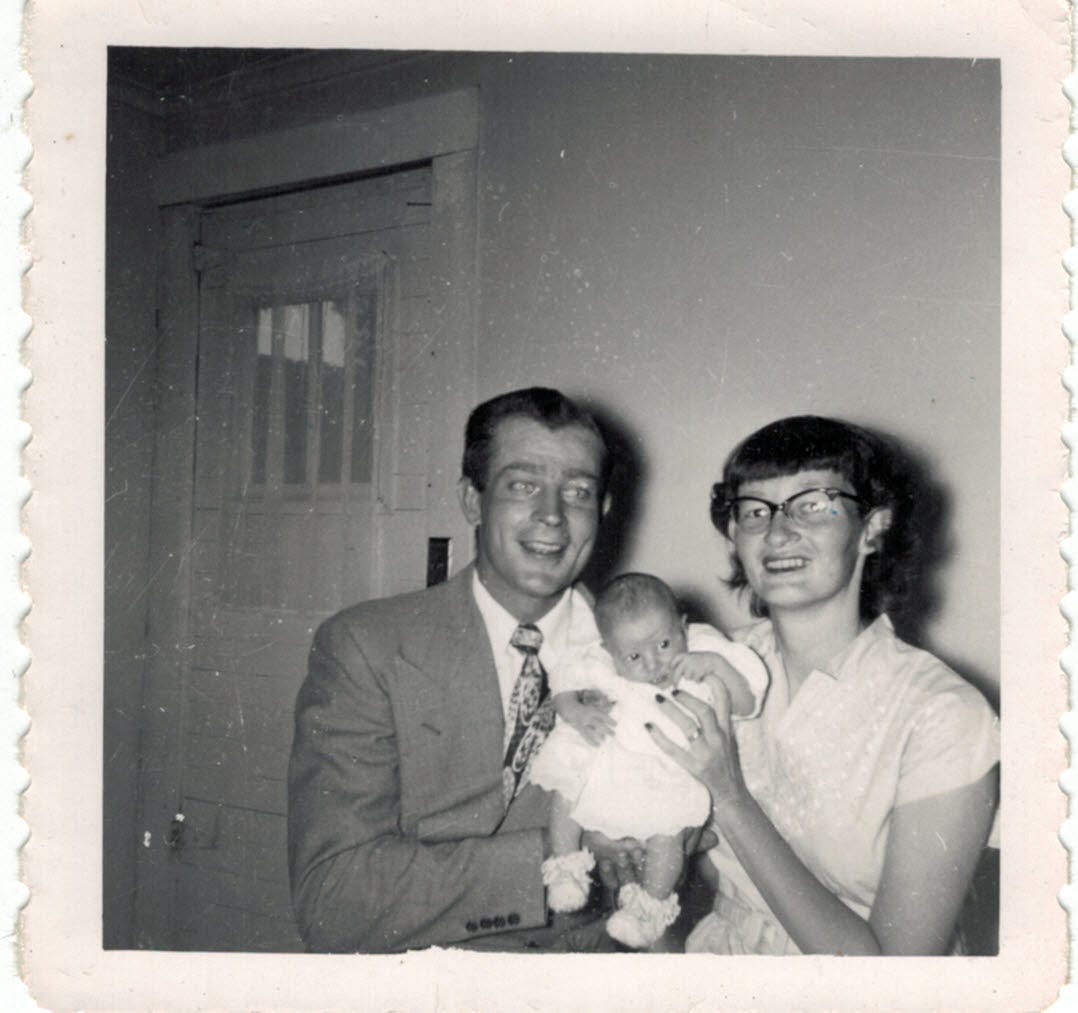Part II: Signing Before Voicing
After my last post about learning language, my dear Coda brother/friend, Sean (check out his wonderful site sean808080.substack.com), reminded me of the other side of language acquisition: listening. Sean was fortunate his parents sent him to play with the Hearing when he was young, intent on him learning to listen.
Spoken language surrounded me in my youth. My Dad was post-lingually Deaf, having lost his hearing at six years old, after he acquired language. Dad frequently used his Deaf voice to talk while signing. Contrary to many beliefs, Deaf have a voice. The ability to articulate words clearly enough for the Hearing to understand depends on a wide variety of factors: access to education, or years of forced speech therapy, just to name a couple.1
Mom also had a wonderful Deaf voice.
Her first two daughters were born in 1949, the years when the Hearing in her life imposed control over her decisions. She, like many Deaf of her time, were frequently told, “If you sign to your children they will never learn how to talk.” This admonition carried enough weight and fear for Mom to put aside signing and predominately use her voice with my sisters. By the time I came along, three years later, Mom was exasperated with not being able to understand them. They mouthed meaningless words lacking visual accompaniment. She determined she would only sign to me and refused to use her voice. Hence, my signing before voicing.
Although the voicing in our home was Deaf, it was still voicing. There was no radio, and a television didn’t grace our living room until I was six years old. My sisters spoke English and their childlike skills passed to me. I do not recall struggling with talking, but I do recall preferring to sign instead of talk. Instructions, details, explanations-everything made more sense to me in sign.2
Undoubtedly, listening (for the Hearing) is part of language acquisition. I saw this obvious fact firsthand when I was a teenager living in Hawaii with my mother. Mom frequently went out to meet Deaf who were vacationing in Hawaii. She gave them personal tours of the island, filled their heads with images of Hawaiian lore, and took them to all the best Hawaiian fare restaurants. In exchange, they paid for her meals, entry to attractions, and gas. (This was years before sign language interpreters were available.)
One day she planned to meet a couple with two young children, visiting from the mainland. “Allyne, come with?” her fingers almost simultaneously making the ‘come’ and ‘question' signs.
“Where?” my expression filled any gaps in my one-word response.
“Meet the couple. Two childrens. Eat.”
Like my mom, food always enticed me. “Sure, go.”
After long and detailed introductions normal for Deaf,3 and ordering our meal, Mom signed to me, “He hear like you.”
I wasn’t fazed. Hearing friends, children, parents, siblings, filled my life. This was not news. “So?” I didn’t understand her point.
Her swaying hands proceeded to share his story.
“Born in country out far other peoples not near, long agos. Mother Father Deaf. Born children five, all Deaf. All childrens go the Deaf school. He baby born last. All think Deaf too. Normal. Grow up, all sign, go Deaf school. Twelve years one teacher think he hear. Test test. Can hear. No want learn listen, happy be Deaf. Never learn talk, listen.”
Now this was something new. I turned to the man and signed, “Can hear?”
“Yes,” a simple nod, a simple smile.
I watched him through our dinner. If his kids yelled, he turned and signed to tell them to quiet down. They all signed to each other.
I do not understand the dynamics of how someone cannot learn to listen, yet I know it to be true firsthand. Fascinating.4
Most adult Deaf who have cochlear implants (CI) never learn to listen nor understand spoken language. My Deaf Aunt had a CI when she was 78 years old. From that moment until she died at 89 years old, she did not understand a single word spoken to her. She did, however, love to listen to jazz music.
No matter their skill of signing, Codas learn the dance between sign and voice, becoming bi-lingual. The beautiful sway and movement of our rhythm stems from our Deaf parents.
I will discuss Deaf voice in an upcoming April post.
I didn’t realize this until I was older. Reasons for the years of failing to comprehend vague and elusive English plagued me. Later this summer I’ll be posting an excerpt from my book about my early school years and my struggles to ‘listen.’
More to come on the topic of Deaf introductions.
I recommend a compelling book about language acquisition and isolation. Perry, Bruce D., M.D., Ph.D. and Szalavitz, Maia. “The Boy Who Was Raised as a Dog: And Other Stories from a Child Psychiatrist’s Notebook.” Basic Books, 2006.


